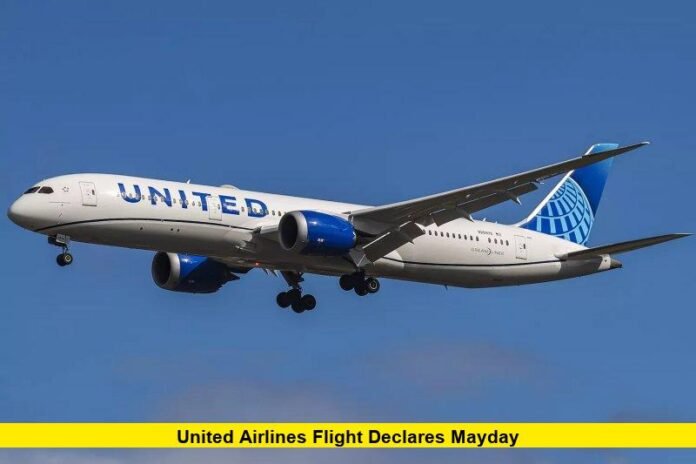A United Airlines flight declares mayday after experiencing engine failure shortly after takeoff from Washington Dulles International Airport on July 25, with the Boeing 787 carrying 219 passengers and 11 crew members safely returning to the airport. The incident occurred during what was supposed to be an eight-hour journey to Munich, Germany.
What Happened During the Emergency
Flight UA108 issued a “mayday” call minutes into its planned journey when the aircraft’s left engine failed during the initial climb. The engine failure occurred at an altitude of 5,000 feet, prompting the crew to declare a MAYDAY and coordinate with air traffic control.
The pilots faced immediate challenges after the engine malfunction. The captain maintained an altitude of 6,000 feet to dump fuel and reduce weight before attempting an emergency landing.
Emergency Procedures and Safe Landing
Since the engine failure was noticed shortly after takeoff, United 108 was heavy with a full fuel load for the long flight to Germany, forcing pilots to circle the sky to burn fuel as the plane’s weight was well above its maximum landing weight.
The aircraft circled for approximately 40 minutes to reduce fuel load before making its emergency approach. All 230 people aboard – passengers and crew – landed safely back at Washington Dulles International Airport.
Aircraft Details and Current Status
The flight was operated by a Boeing 787-8, registration N27901, which was originally delivered to United Airlines in 2012 as one of the first Dreamliners to enter the airline’s fleet. The aircraft remained on the ground at Washington Dulles Airport for inspection and repairs.
This incident highlights the importance of pilot training and emergency procedures. When a United Airlines flight declares mayday, it triggers immediate response protocols from both the flight crew and air traffic control to ensure passenger safety.
The Federal Aviation Administration will likely investigate the engine failure to determine the exact cause and prevent similar incidents in the future.
What are your thoughts on airline emergency procedures? Share your experiences or questions about aviation safety in the comments below to keep the conversation going.
